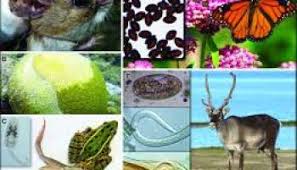In the vast tropical regions characterized by marked dry seasons and periodic droughts, climate is often the most prominent factor influencing animal health. It determines seasonal loss of body conditions, production and periodic starvation in years or times with exceptionally poor rain.
Apart from this, the tropical climate stimulates proliferation of infectious and parasitic diseases through recurring provision of a favorable environment for development, growth and spread of such diseases and their agents.
The resulting problems they cause livestock vary between various climate regions, systems of management and between breeds or populations of animals.
Climatic differences between regions have profound effects. It is obvious that worm eggs survive far better in humid climates than in the deserts, although surprisingly favorable conditions may occur locally around water points in a dry area.
Read Also: Direct Effects of Climate on Animal Production
In Africa, tsetse flies disease thrive in warmer lower regions, while the tick vector of East Coast fewer prefers cooler, higher areas of greater altitude.
As a general rule, animal populations tend to be adapted to the local diseases in the area in which they lived many generations, especially as they are kept under traditional, extensive management problems tend to crop up or increase, when they are kept in crowded conditions, favorable to intensive disease transmission and to concentrations of helminthes, eggs coccidia and ectoparasites.
Major climatic effect on animal diseases and parasites arise when European cattle are introduced into the topics.
Quite apart from the tropical climatic stress that further compound the poor health condition, exotic breeds such as dermatophilosis , theiliosis , trypanosoma or trypanosomiasis in full , babesia or babesiosis in full , coccidia or coccidiosis , tick infestation in house and a host and of other diseases are endemic.
It is thus clear that co-evolution of host and parasite tend to result in natural selection of greater resistance on the part of the host.
Quite often it is not so much a matter of breeds or species, but more of populations locally selected by natural disease pressure.
Read Also: Indirect Effects of Climate on Animal Production
Worm infestations are less spectacular than acute bacterial, viral or protozoan diseases, and their harmful effects, loss of production or sub-optional performances, are often underestimated.
Acute rise in the decree of worm infestation during the rainy season in the tropics has been reported. The use of existing knowledge on the epidemiology and immunology combined with use of drugs have assisted a great deal to limit infestations levels where they are harmless or nearly so.
Eradicated is hardly possible due to major part of the worm population occurring in the environment in form of eggs and larvae.
Ectoparasites infestations apparently take over from the internal parasites as rainfall diminished into dry season. Ectoparasites inflict irritation, wounds and abscesses by their biting habit on the host.
Thus resulting in painful bites, restlessness, reduced production performance, damages to hides, loss of blood, teat and part of the udder, causing considerable economic waste.
The conditions further predispose animals to various parasitic and disease attack. Beside climatic conditions that permit the prevalence and proliferation of the ectoparasites, alternative hosts, especially wild beasts and domestic animals, harbor different stages of the biological cycle of the parasites.
Certain pocket of micro-environments also provides suitable places for breeding of the ectoparasites, making eradication much more cumbersome where such programme exists.
Summary / Conclusion
Virtually all production aspects of animal agriculture are affected or influenced by the unique tropical climate. It is very clear that the climate impinges directly on the biological functions of the body system, animal behavior and production performance through such overbearing and moderating influence of temperature, humidity, solar radiation, and indirectly on feed supply, parasites and diseases, storage and handling of animal products.
Progress in animal production has for age long being dependent on adjusting production system to suit the influence of the climate or changing the body physiological functions and behaviour to fix-up with climate dictates.
These foundational factors underlie the various systems of production, systems of housing, feeding, reproduction and the overall management practices that are often adopted, modified or imposed.
The review has indicated the divergent effects of the tropical climate on the production system, animal behaviour, productivity, feed production, and animal healthcare with implications for management practices required to reduce negative or enhance positive influence of the climate.
The knowledge of the production environment in the tropic are tools for management practices in animal production. Students need to pay great attention in undertaking theoretical and practical course in the subject area.
